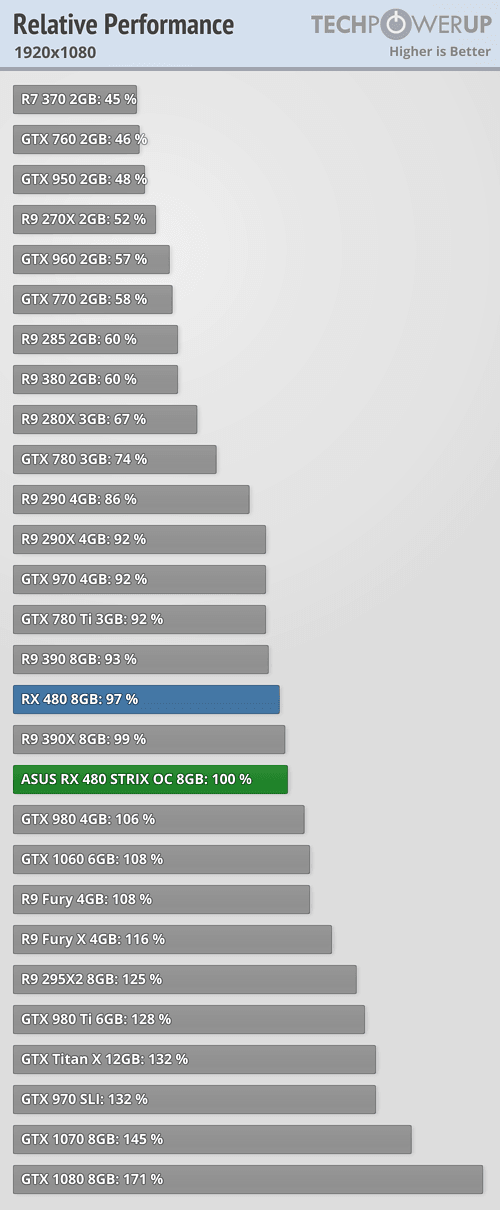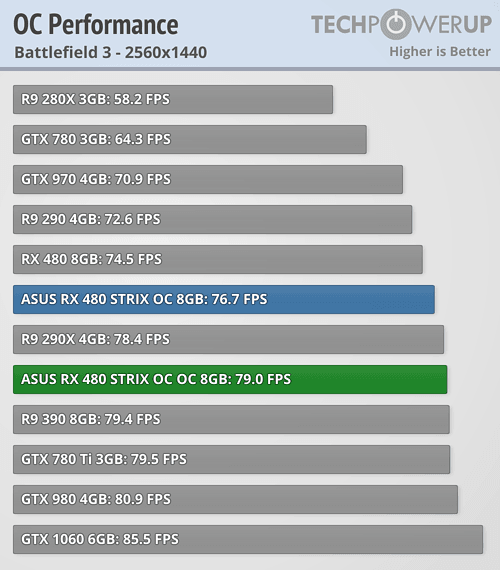-Fran- :
https://www.techpowerup.com/reviews/ASUS/RX_480_STRIX_OC/2.html
That is the only one I could find for the STRIX.
The price used is $259USD, but there is no way in hell Asus is going to price the STRIX $259. I saw it in the UK for pre-order at £290GBP, so it's going to be at least $50USD premium over the reference RX480. Given the performance numbers in that review the value is mediocre at best, even with the improved thermals and reduced noise (at full speed, they are actually very loud anyway).
We need more reviews with custom cards to find the best xD
Cheers!
Yeah and the release rate is toooooooooooo sloooooooooooooooooooooooooooooow. I so wanted to go team read just to support the development but the amount of time they make you wait... ugh. I just emailed my retailer to get me a 1060 since they're plentiful(compared to custom 480's).
A shame, I was curious how much I could get with async compute in the future.
I wonder if it's rather bad marketing and not the actual performance of the GPU's that made AMD lose market share.
EDIT: I have to add! In Europe the cheaper custom(!!) 1060's sell for roughly the same as the 8GB model of the 480(reference!). Really weird how AMD deals with things.




